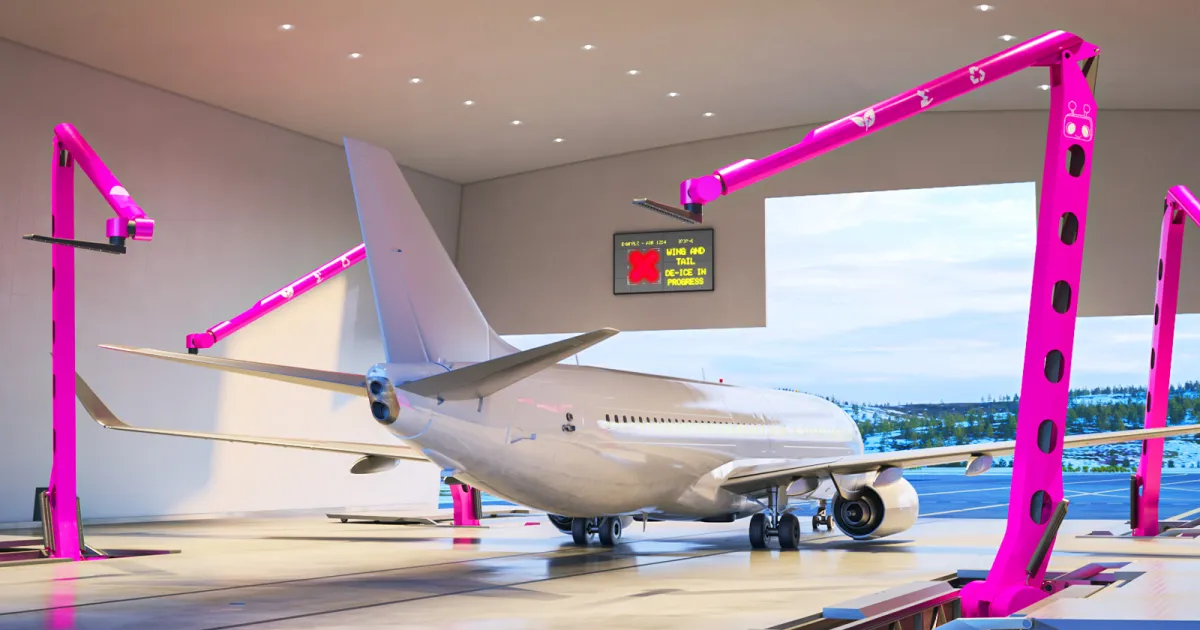Sky Guardians: The Giant AI Robots Revolutionizing Aircraft Cleaning and Inspection
The aviation industry is synonymous with rigorous standards and meticulous attention to detail. Ensuring the safety and cleanliness of aircraft is a top priority, requiring sophisticated technology and skilled labor. Recently, the introduction of giant AI robots designed to clean and inspect planes is set to revolutionize this critical aspect of aviation.
The Advent of Giant AI Robots
These AI-powered robots are not just larger versions of their traditional counterparts; they are sophisticated machines equipped with advanced sensors, artificial intelligence, and robotics technology. Built to handle the demanding environment of aircraft maintenance, these robots can perform tasks that were once solely the domain of human workers.
Key Features of Giant AI Robots
1. Advanced Sensors and AI: These robots are equipped with a multitude of sensors and AI algorithms that enable them to detect even the smallest anomalies. They can perform detailed inspections of an aircraft’s exterior, identifying potential issues that may require further investigation.
2. Precision Cleaning: Utilizing high-pressure cleaning systems and precise control mechanisms, these robots ensure that every part of the aircraft is thoroughly cleaned. This not only enhances the aesthetic appeal but also contributes to the overall safety by removing debris and contaminants.
3. Autonomous Operation: These robots can operate autonomously, reducing the need for human intervention. They can navigate complex surfaces and reach difficult-to-access areas, ensuring comprehensive coverage.
4. Data Collection and Analysis: Equipped with advanced data collection tools, these robots can gather and analyze data during inspections. This information can be used to predict maintenance needs and prevent potential issues before they become critical.

Applications in the Aviation Industry
1. Routine Maintenance: These robots can perform regular cleaning and inspection tasks, ensuring that aircraft are always in optimal condition. This helps in maintaining high safety standards and extending the lifespan of the aircraft.
2. Pre-flight and Post-flight Checks: Before and after each flight, these robots can quickly inspect the aircraft for any damage or contamination, providing a thorough and reliable assessment.
3. Predictive Maintenance: By analyzing the data collected during inspections, airlines can adopt a predictive maintenance approach. This helps in identifying potential issues early and addressing them proactively, reducing downtime and maintenance costs.
4. Environmental Benefits: Automated cleaning systems can be more efficient in water and detergent usage, reducing the environmental impact of aircraft maintenance activities.
Future Implications
The integration of giant AI robots into aircraft maintenance heralds a new era of efficiency and safety in aviation. As these technologies continue to evolve, they promise to bring several benefits:
1. Increased Safety: By providing more thorough and reliable inspections, these robots can significantly enhance the safety of air travel.
2. Cost Savings: Automation can reduce labor costs and minimize downtime, leading to significant cost savings for airlines.
3. Enhanced Efficiency: Robots can work around the clock without fatigue, ensuring that maintenance tasks are completed faster and more efficiently.
4. Innovation in Maintenance Practices: The data-driven approach facilitated by these robots can lead to new insights and innovations in aircraft maintenance, further enhancing the industry’s standards.
Conclusion
Giant AI robots designed for aircraft cleaning and inspection are a game-changer for the aviation industry. Their advanced capabilities, coupled with the ability to operate autonomously, offer numerous benefits, from enhanced safety and efficiency to significant cost savings. As technology continues to advance, these robots will play an increasingly vital role in ensuring that the skies remain safe and secure for all travelers. The future of aviation maintenance is here, and it is both impressive and promising.
.png)